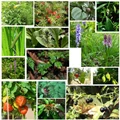
Manchineel tree is notorious in its habitats of sandy oils, and mangroves of South Florida, the Caribbean, Central America, and northern South America. This rare tropical plant offers deceptively sweet fruit and is one of the most poisonous trees on Earth.
Several of them are labeled with ‘DO NOT TOUCH’ warning signs. Besides poisoning the occasional tourist, conquistador, and literary character, Manchineel holds the world record for ‘most dangerous tree’.
Most Toxic Parts of the Tree
The fruits of this tree are an obvious threat that has earned its name from Spanish conquistadors – ‘Manzanita de la Muerte which means ‘little apple of death. The fruit resembles a small green crabapple about 1-2 inches wide, it can cause hours of agony and expose you to potential death with a single bite.
“I rashly took a bite from this fruit and found it pleasantly sweet. Moments later we noticed a strange peppery feeling in our mouths, which gradually progressed to a burning, tearing sensation and tightness of the throat. The symptoms worsened over a couple of hours until we could barely swallow solid food because of the excruciating pain and the feeling of a huge obstructing pharyngeal lump”, Radiologist Nicola Strickland wrote in a 2000 British Medical Journal article about eating manchineel with a friend.
Poison apples are just a start though, as every part of the Manchineel is toxic. According to the Florida Institute of Food and Agricultural Sciences (IFAS) – “Interaction with and ingestion of any part of this tree may be lethal. That includes bark, leaves, and the milky sap, one drop of which can scorch the skin of shade-seeking beach-goers. Even without touching the tree itself, people (and car paint) have been burned by the thick caustic sap as rain washes it off branches overhead.
Pain and Effects it causes
This tree holds a cocktail of toxins in it, containing hippomanin A and B as well as some yet to be identified. According to ‘Poisonous Plants and Animals of Florida and the Caribbean’ by David Nellis – “A few toxins act instantly, while others take their time. Symptoms from contact with sap range from a rash and headache to acute dermatitis, severe breathing problems, and temporary painful blindness.” Burning or chopping of its wood is not advised, since its smoke and sawdust burn skin, eyes and lungs.
“Eating the fruit usually causes abdominal pain, vomiting, bleeding and digestive tract damage” Nellis adds. Although there is a considerably wide risk of death, mortality data for ingesting the manchineel fruit (known as the ‘beach apple’) are scarce. Besides the short-term danger, some manchineel compounds may be co-carcinogenic, promoting the growth of benign and malignant tumors. The most famous victim of this tree is the conquistador Juan Ponce de Leon, who led the first European expedition into Florida in 1513. Eight years later, Leon returned to colonize the peninsula, but his invasion was resisted by Calusa fighters. The Caribbean natives used manchineel sap to make poison arrows, one of which reportedly struck Leon's thighs during the 1521 battle. He then fled with his troops to Cuba where he died of his wounds.
Practical uses of the tree
According to IFAS, “This tree is used for peaceful purposes also. Normally it is a hefty shrub, which grows up to 50 feet tall, producing toxic timber that has long tempted Caribbean carpenters. Despite the danger, people do have used manchineel to make furniture for centuries, carefully cutting the wood and then drying it in the sun to neutralize its poisonous sap. Also, the natives have been using it as medicine: a gum made from its bark can treat edema, while dried fruits have been used as a diuretic. The tree is poisonous to birds and animals, but there are some creatures like – ‘The Algarrobo' or striped iguana of Central and South America, doesn’t seem to bother and is known to eat manchineel fruit and sometimes even live among the tree’s limbs.”












